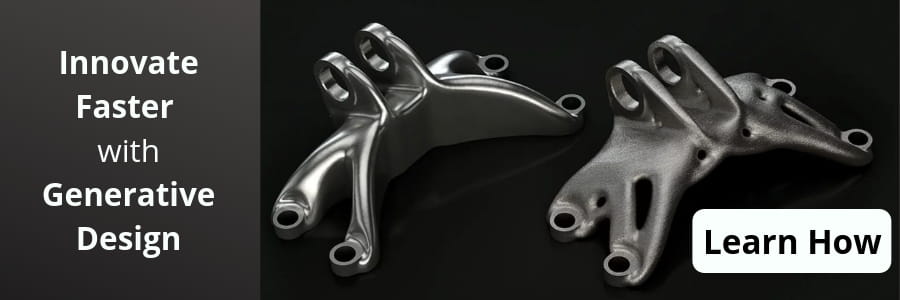Artificial Intelligence: Transforming the Industrial Sector
There is no escaping the term artificial intelligence (AI) today as it perpetuates pop-culture, the media, and industrial enterprises. PTC broadly defines artificial intelligence as a discipline that uses computer science and statistics to create systems that perceive, understand, and act in a manner similar to organic intelligence.
The field of AI covers a variety of technologies leveraging a variation of data science techniques capable of ‘learning’ to enable this organic intelligence.
We see three emerging technology sectors intertwined with AI driving digital transformation in the industrial sector: computer vision, machine-learning, and generative design.
Let’s take a look at each one:
Computer Vision:
Computer vision (CV) is a far-reaching term to describe the field of how computers and machines can see the world around us. In relation to artificial intelligence, it is a crucial function where object detection and image recognition algorithms are solving problems across science and industry once thought impossible. The terms deep-learning and artificial neural networks are often associated with computer vision due to their capabilities to interpret or perceive CV-generated data.
The preliminary arguments for computer vision-enabling technologies date back to Frank Rosenblatt’s neural-network system ‘perceptron’ in the 1950s, but the processing power didn’t exist to prove its potential.
This has changed today through Moore’s Law; processors (including GPUs) are capable of quickly rendering and analyzing the unstructured data from images and video to perceive the environment.
In real-world in-situ cases this could look like an augmented reality (AR) headset analyzing machine health data on a factory floor or an autonomous vehicle perceiving the driving environment and navigating accordingly.
AI is enabling computer vision in AR through perception via native sensors (camera, GPS etc.) on the hardware itself and software interpreting the environment with nascent capabilities such as automatic object recognition. Recognizing hand-gesturing, eye tracking and interfaces with natural language processing (smart assistants) are increasingly pivotal AR capabilities propelled by AI.
Machine Learning:
Machine learning is the extensive branch of AI, specific to systems, models, and algorithms that can learn without explicit programming and recognize patterns to predict outcomes. There are numerous learning models used for different situations, but in general they are segmented as either supervised or unsupervised.
In supervised models (classification, regressions, naïve bayers, etc..) there is a ‘ground truth’ where data is known for what the defined output values should be.
In manufacturing, a regression algorithm uses input data from sensors (temperature, vibrations etc..) to estimate an asset’s remaining useful life, which can be crucial in a predictive maintenance use case. With unsupervised machine-learning (i.e. clustering), the model almost works in reverse by starting with the expected outcome (but not yet known) and trains the algorithm consequently.
Artificial neural networks and their role in deep learning models are crucial here, where the input data is fed through hidden layers. Each layer is trained to recognize a certain feature and ultimately produce an output; an autonomous vehicle relies on these built-out networks to understand trees from stop signs from pedestrians.
Again, there isn’t a ‘one-size fits all’ machine-learning algorithm – it’s entirely situational to the business need; a specific deep learning model could be better for facial recognition and a machine-learning algorithm through regression might be better for predicting a system failure.
Generative Design:
With the emerging concept of generative design, engineers will be able to increase productivity, innovation, and efficiency throughout the manufacturing process. These iterative design processes uses human inputs for constraints and characteristics and then the software intuitively provides a design in real-time simulations that adheres to the parameters.
AI is embedded throughout this development process by presenting design alternatives for consideration and linking in a range of factors, such as preferred materials, purchasing decisions, manufacturing capacity, product variances, and supply chain status, among others.
Within these software programs are a range of engineering tools and supporting use cases, including topology optimization, volumetric modeling, and lattice structure designs, enabling powerful products to come into the real-world through additive manufacturing. Analysts are forecasting this emerging generative design market to be nearly $45 billion market in 2030.
Final Thoughts
AI is a broad field made up of sub-categories like machine learning and deep learning, which are being embedded into applications including computer vision and generative design. Successful AI adoption will require unpacking specific business problems crucial to an organization’s success and aligning with the proper technology providers who share a similar vision. With AI adoption, industrial companies can become one step closer to driving digital transformation across the enterprise.
